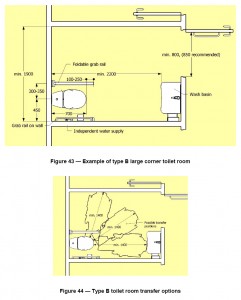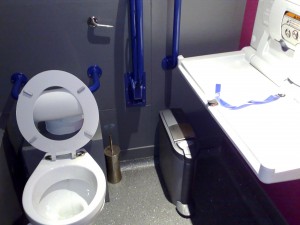The 2007 UNFCCC Climate Summit held in Bali, Indonesia, from 3rd-15th December … resulted in a strong global consensus in favour of immediate and concerted action on climate change … and a sharply worded document, the 2007 Bali Action Plan … key parts of which state …
‘ The Conference of the Parties,
Resolving to urgently enhance implementation of the Convention in order to achieve its ultimate objective in full accordance with its principles and commitments ;
Reaffirming that economic and social development and poverty eradication are global priorities ; …
Recognizing that deep cuts in global emissions will be required to achieve the ultimate objective of the Convention and emphasizing the urgency to address climate change as indicated in the Fourth Assessment Report of the Intergovernmental Panel on Climate Change ;
1. Decides to launch a comprehensive process to enable the full, effective and sustained implementation of the Convention through long-term cooperative action, now, up to and beyond 2012, in order to reach an agreed outcome and adopt a decision at its fifteenth session, by addressing …
(a) A shared vision for long-term co-operative action, including a long-term global goal for emission reductions … in accordance with the provisions and principles of the Convention, in particular the principle of common but differentiated responsibilities and respective capabilities ;
(b) Enhanced national/international action on mitigation of climate change …
(c) Enhanced action on adaptation …
(d) Enhanced action on technology development and transfer to support action on mitigation and adaptation …
(e) Enhanced action on the provision of financial resources and investment to support action on mitigation and adaptation and technology co-operation … ‘
.
Just a few weeks later, on 12th February 2008, in New York … Ambassador John Ashe, Permanent Representative of Antigua & Barbuda to the United Nations, delivered an Important Statement on behalf of the Group of 77 & China (comprising 130 countries) … at the Thematic Debate of the U.N. General Assembly: ‘Addressing Climate Change – The United Nations and the World at Work’. Fully reflecting and supporting the Bali Action Plan, this Statement clearly set out the Climate Change Priorities for the Developing and Least Developed Countries, including the Small Island Developing States (SIDS). It included the following important extract …
‘ Climate Change as a Sustainable Development Challenge
5. Mr. President, the Group of 77 and China is of the view that discussions on climate change should be placed within the proper context of sustainable development. It is imperative that our discussion reinforces the promotion of sustainable development …
6. We must not lose sight of the fact that climate change is a sustainable development challenge. As such we should adhere steadfastly to the Rio principles, in particular the principle of common but differentiated responsibilities. We must take fully into account that poverty eradication, economic and social development are the paramount priorities of developing countries …
7. Mr. President, urgent action is needed now to fully implement the commitments under the Convention and the Kyoto Protocol, especially commitments on financing for adaptation, technology transfer and capacity building, if we are to make progress towards the achievement of the sustainable development goals of developing countries …
8. Urgent action is particularly needed on commitments, as climate change threatens the livelihoods of the very poor and vulnerable developing countries, in particular Africa, the Least Developed Countries, the Land-Locked Least Developed Countries, Small Island Developing States, and disaster prone developing countries. The G77 and China is of the view that while addressing the challenge of climate, the most affected countries and most vulnerable countries should be given adequate attention and support.
9. Developed countries Parties must take the lead in addressing the implementation gap, since the extent to which developing countries Parties can effectively respond to the challenge depends on the effective implementation by developed country Parties of their commitments relating to financing and technology transfer.’
.
The Developed Countries, i.e. those listed in Annex I of the 1992 UN Framework Convention on Climate Change, did not listen to the words of John Ashe. This helps to explain the Fracture of the 2007 Bali Consensus at Copenhagen, in December 2009 … the sharp division between the ‘have’s’ and the ‘have-not’s’ of our small planet.
Within Developed Countries … there may be a certain comfort, at an intellectual level, in linking Sustainable Development and Climate Change. However, in vulnerable Developing Countries this link is critical … where poverty eradication, and economic and social development are paramount priorities. All are ‘responsible needs’ which are clearly specified and supported by International Law. Yet, the Developed Countries persist in disregarding their legal obligations under Articles 2.3 and 3.14 of the 1997 UNFCCC Kyoto Protocol … and, more importantly, evading their historical responsibility for causing the problem of Anthropogenic Climate Change in the first place.
Closer to home, in the European Union Member States, far too much emphasis is being placed on fully exploiting the various ‘flexibility mechanisms’ within the UNFCCC Process … rather than on direct and proper compliance with their individual Kyoto Mitigation Commitments. There is little or no interest in Adaptation. Meanwhile, the reality shown by the latest analysis of observations from the World Meteorological Organization’s Global Atmosphere Watch (GAW) Programme is that the globally averaged mixing ratios of carbon dioxide (CO2), methane (CH4) and nitrous oxide (N2O) reached new highs in 2008 with CO2 at 385.2 parts per million, CH4 at 1797 parts per billion (ppb) and N2O at 321.8 ppb … higher than those in pre-industrial times (before 1750) by 38%, 157% and 19%, respectively !
.
.
END



